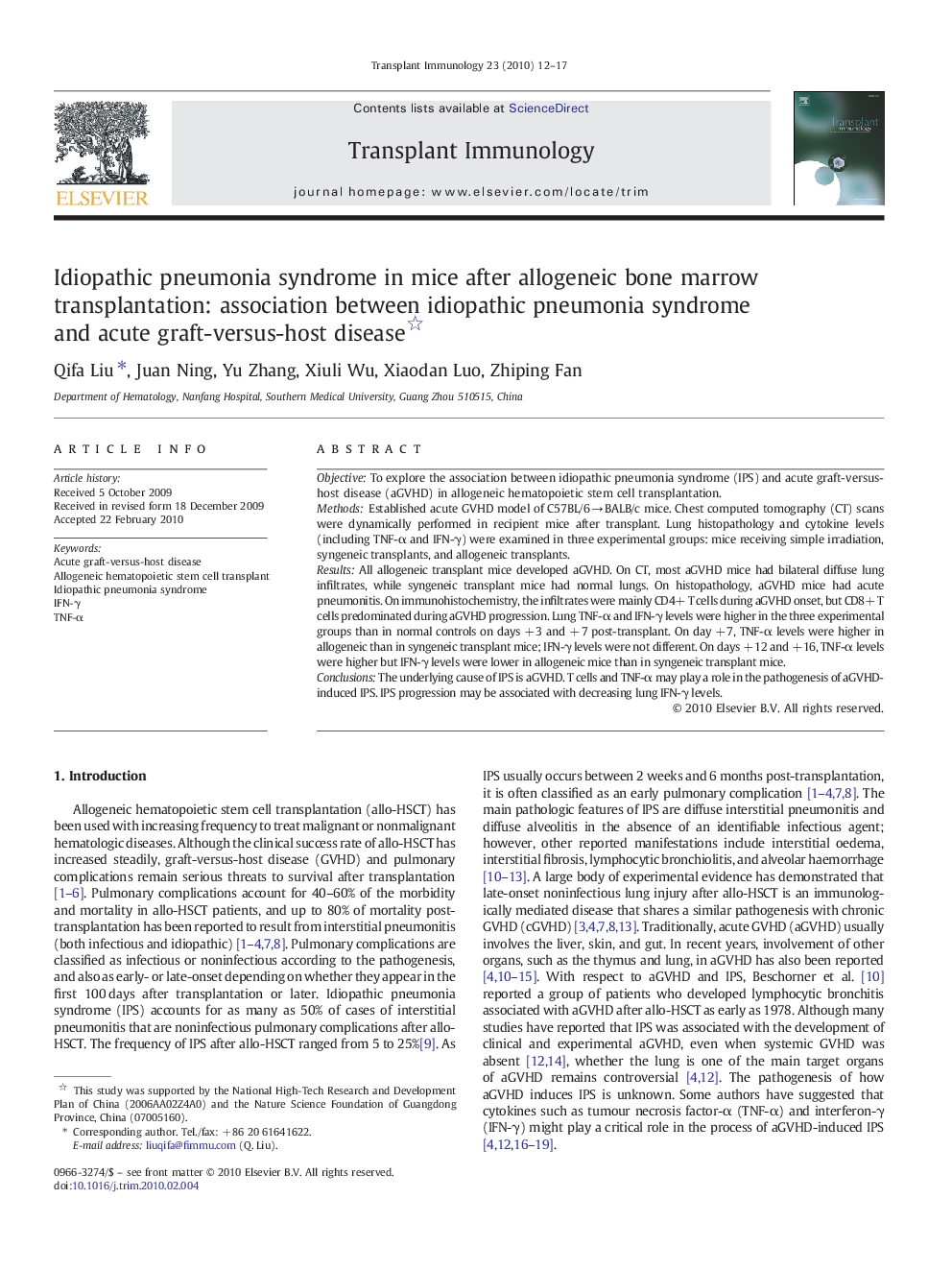| Article ID | Journal | Published Year | Pages | File Type |
|---|---|---|---|---|
| 3392239 | Transplant Immunology | 2010 | 6 Pages |
ObjectiveTo explore the association between idiopathic pneumonia syndrome (IPS) and acute graft-versus-host disease (aGVHD) in allogeneic hematopoietic stem cell transplantation.MethodsEstablished acute GVHD model of C57BL/6 → BALB/c mice. Chest computed tomography (CT) scans were dynamically performed in recipient mice after transplant. Lung histopathology and cytokine levels (including TNF-α and IFN-γ) were examined in three experimental groups: mice receiving simple irradiation, syngeneic transplants, and allogeneic transplants.ResultsAll allogeneic transplant mice developed aGVHD. On CT, most aGVHD mice had bilateral diffuse lung infiltrates, while syngeneic transplant mice had normal lungs. On histopathology, aGVHD mice had acute pneumonitis. On immunohistochemistry, the infiltrates were mainly CD4+ T cells during aGVHD onset, but CD8+ T cells predominated during aGVHD progression. Lung TNF-α and IFN-γ levels were higher in the three experimental groups than in normal controls on days + 3 and + 7 post-transplant. On day + 7, TNF-α levels were higher in allogeneic than in syngeneic transplant mice; IFN-γ levels were not different. On days + 12 and + 16, TNF-α levels were higher but IFN-γ levels were lower in allogeneic mice than in syngeneic transplant mice.ConclusionsThe underlying cause of IPS is aGVHD. T cells and TNF-α may play a role in the pathogenesis of aGVHD-induced IPS. IPS progression may be associated with decreasing lung IFN-γ levels.
